Pisto is the Spanish version of ratatouille (stewed vegetables), and it's one of my husband's favorite dishes. This simple stew is a mouthwatering way to enjoy the best summer produce!
Want to try some other Spanish stews? You'll enjoy these authentic recipes for chicken and chorizo stew and Spanish beef stew.
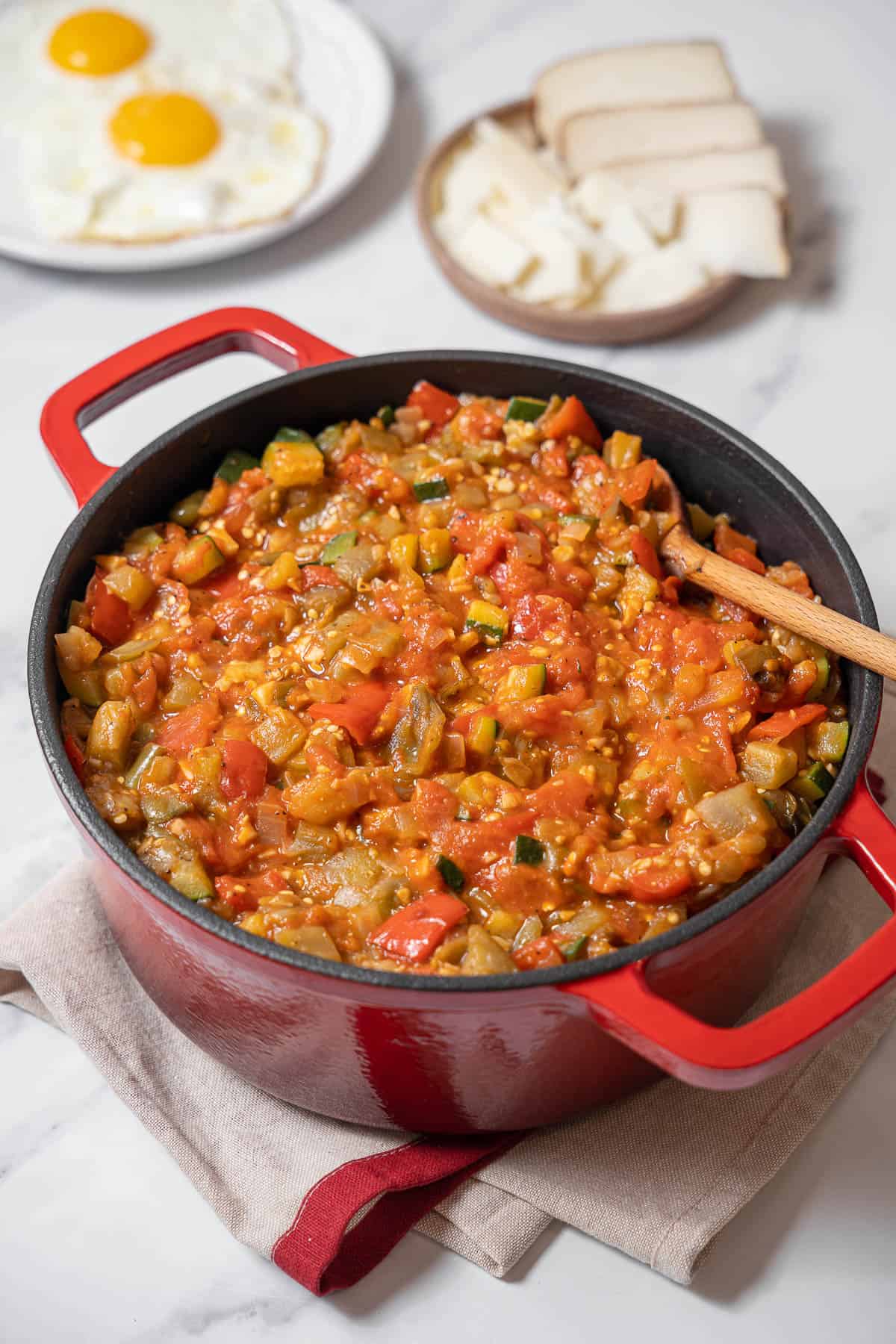
Jump to:
Introduction
Pisto sounds remarkably simple, but like most simple dishes in Spain, there are excellent versions and terrible ones. The trick, as usual, is the quality of your produce and of your extra virgin olive oil, as well as the care you take while slowly stewing the vegetables.
This pisto recipe cooks each vegetable separately, which is more work, but is worth the time because it ensures each vegetable is perfectly cooked and not mushy.
Ingredients
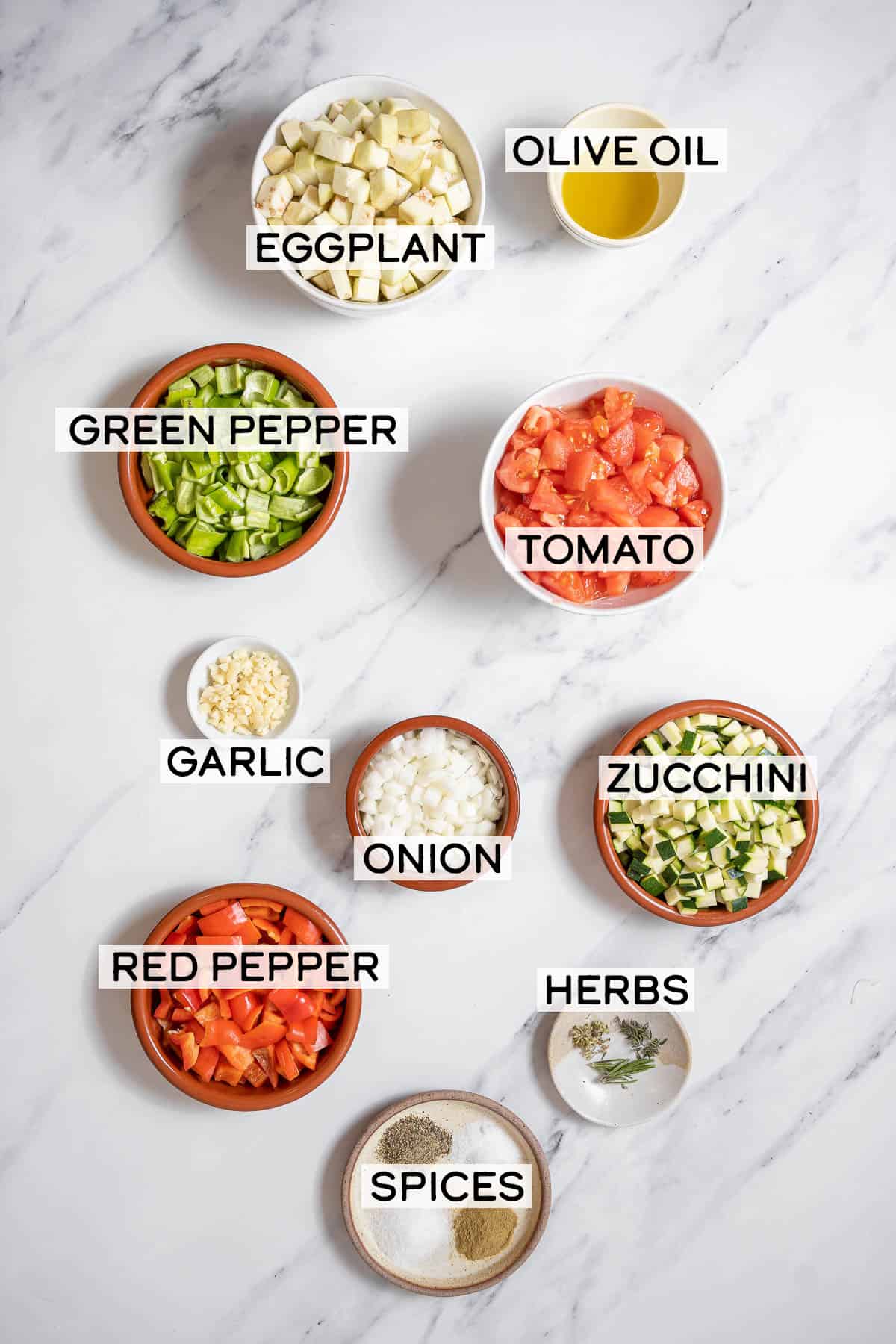
Curious what ingredients you need to make a comforting pot of Spanish pisto? Let's talk about the most important ingredients that you need to get started.
- Tomato: It's best to use ripe, fresh tomatoes that are diced, but you can use good quality, canned diced tomatoes during the winter or in a pinch.
- Eggplant: The eggplant (aubergine) in this recipe is salted to remove its bitterness, then rinsed before sautéing. Choose eggplant that's firm and smooth.
- Zucchini: This is a great way to enjoy bountiful summer zucchini (courgette). Use ones are smooth and firm.
- Red and Green Pepper: I like to use diced red and green bell pepper for a great balance of color and flavor in the stew.
- Olive Oil: Be sure to use the best quality olive oil that you can find--preferably a Spanish oil if possible. This will really make a difference in the flavor of the pisto!
See recipe card for full information on ingredients and quantities.
Variations
- Spicy Version: For a non-traditional but delicious touch, add a couple of dried cayenne peppers along with the garlic.
- Zucchini: Since zucchini is a variety of squash, you can replace it with an equal amount of summer squash if you'd like.
How to Make
If you’d like to see the full ingredients and instructions, scroll to the bottom of the post for the printable recipe card.
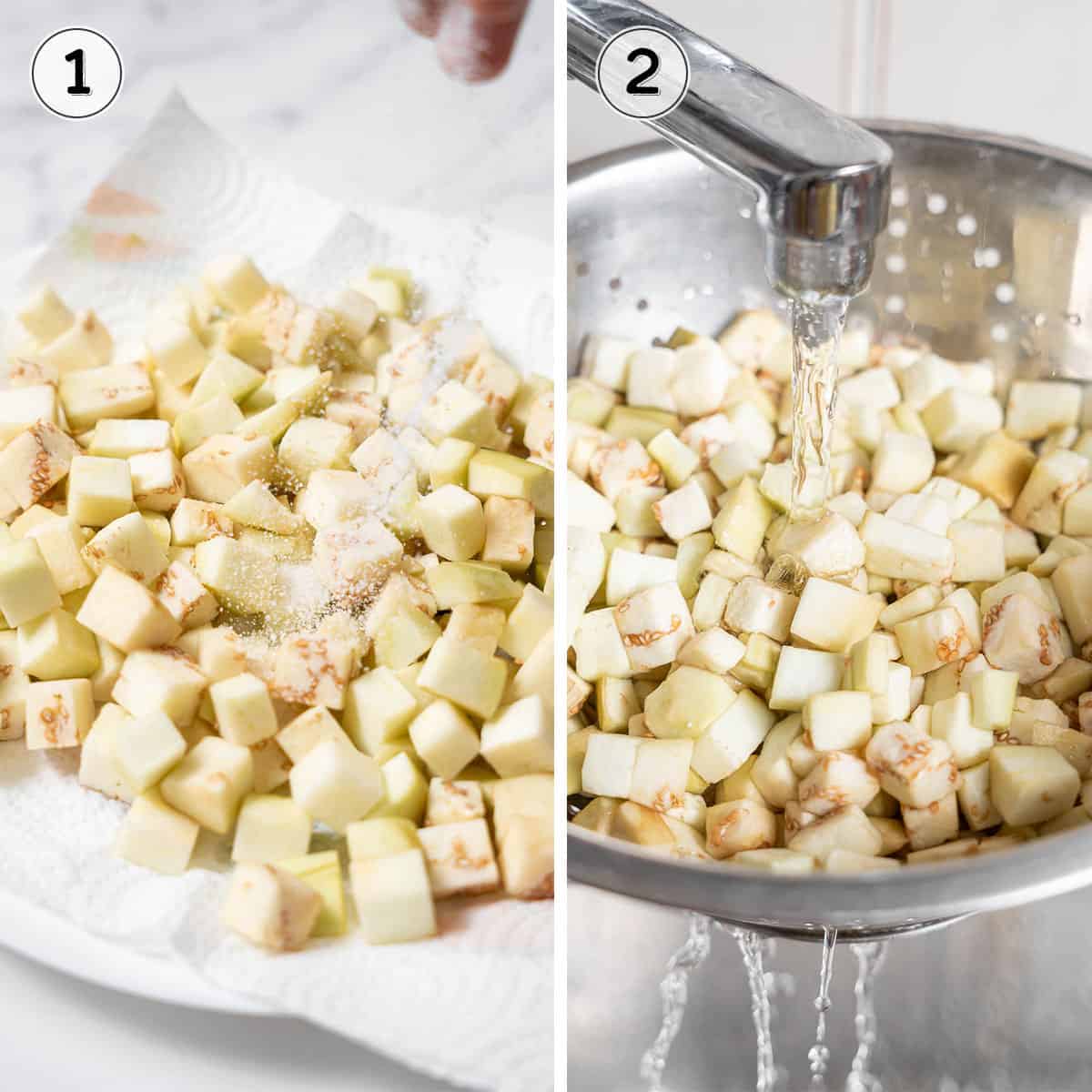
- Peel and dice the eggplant. Spread it on paper towels and sprinkle with salt and let it sit for 10 minutes.
- Once it's sweated for 10 minutes, rinse the eggplant with cold water to remove the salt.
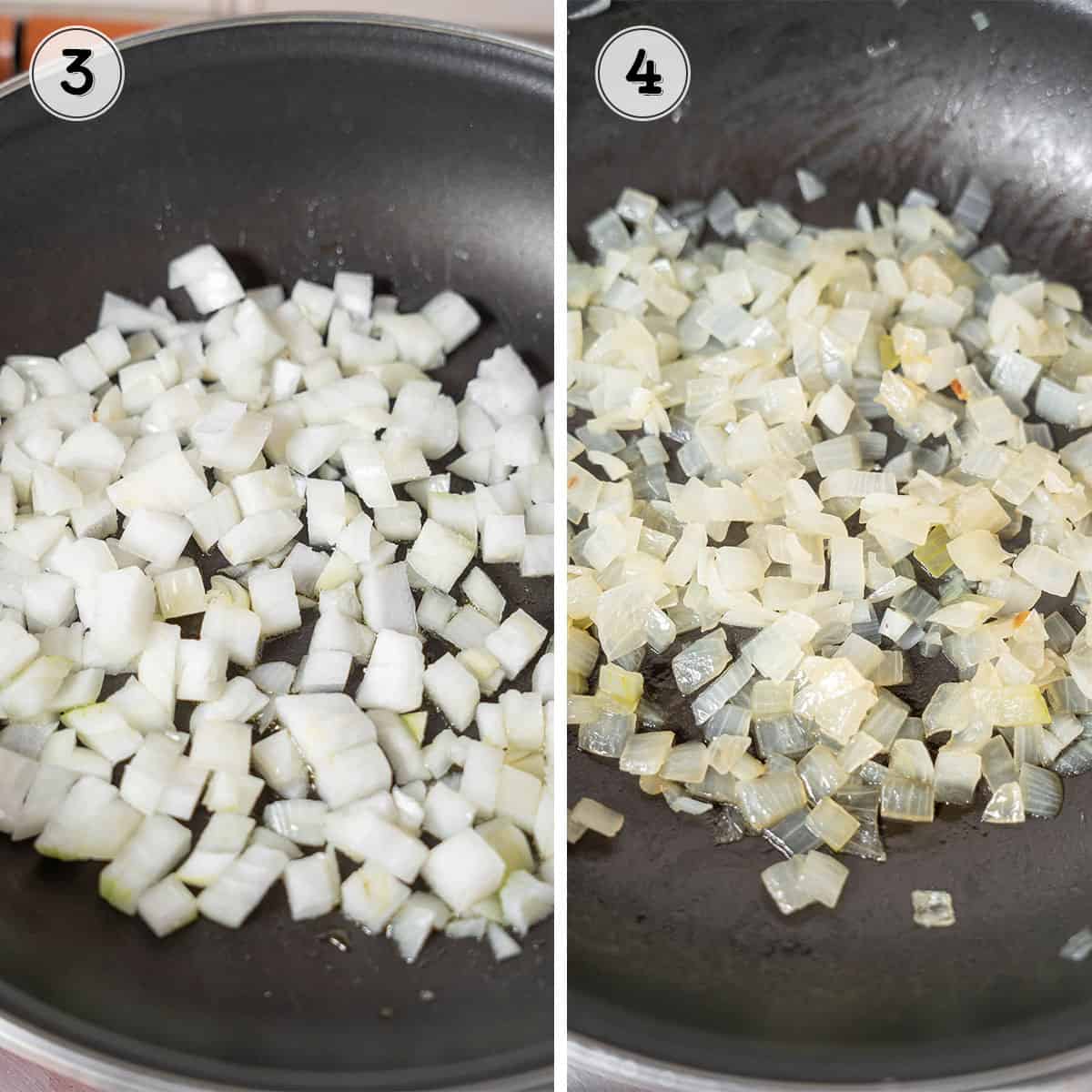
- Heat a splash of olive oil in two skillets over medium heat. Add the onions to one and stir to coat in the oil.
- Cook over medium-low heat until they turn transparent, then cover the pan and allow them to gently steam without turning brown. Once the onion is cooked, reserve it in a bowl.
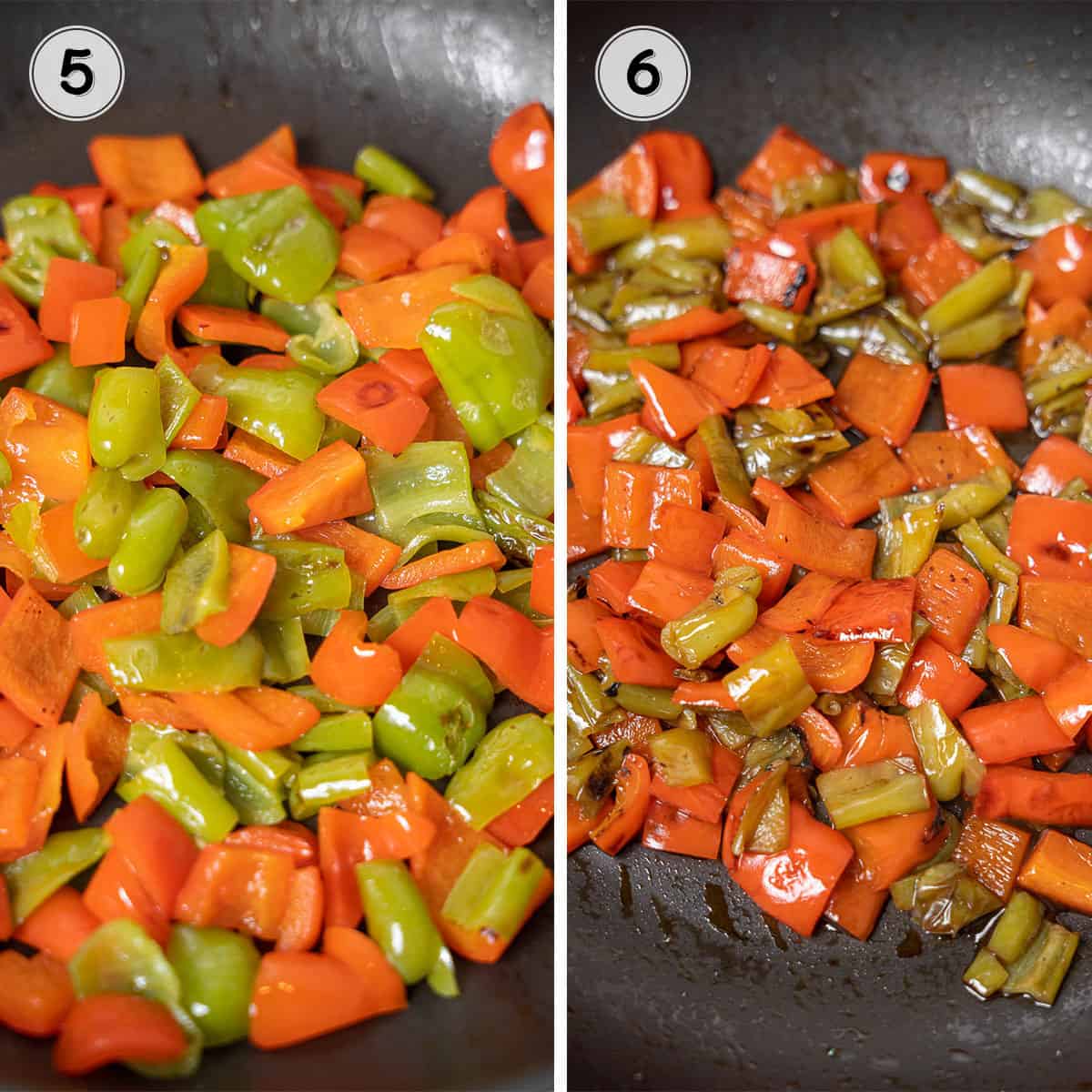
- Add the red and green peppers to the other skillet and toss in the hot oil.
- Cook over medium-high heat until the peppers begin to brown, then lower to medium and cook for 10 minutes or until soft. Reserve the peppers along with the onion.
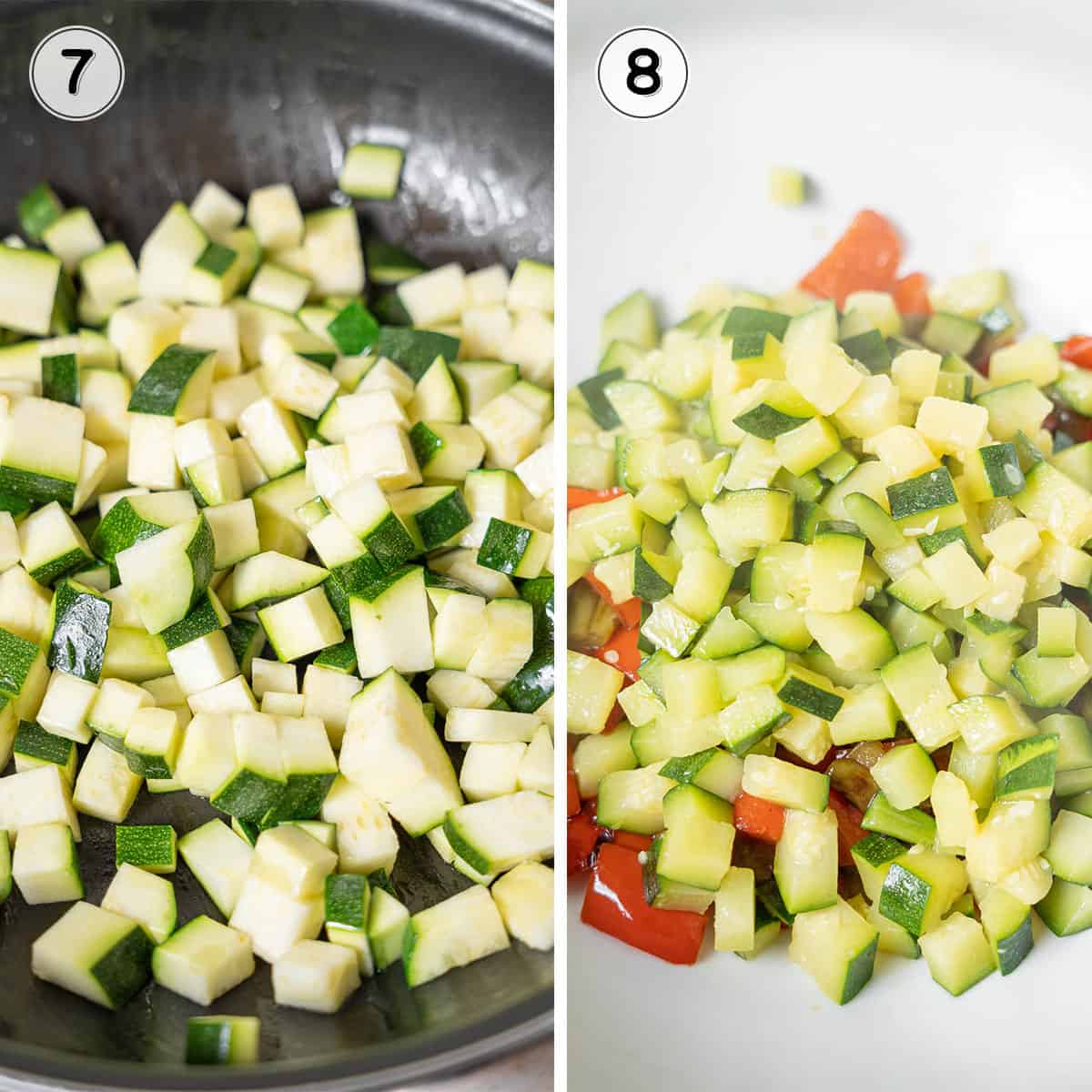
- Heat more olive oil in the same two skillets. Cook the zucchini in one over medium-high heat to brown.
- Lower the heat and cover and cook until softened, stirring occasionally.
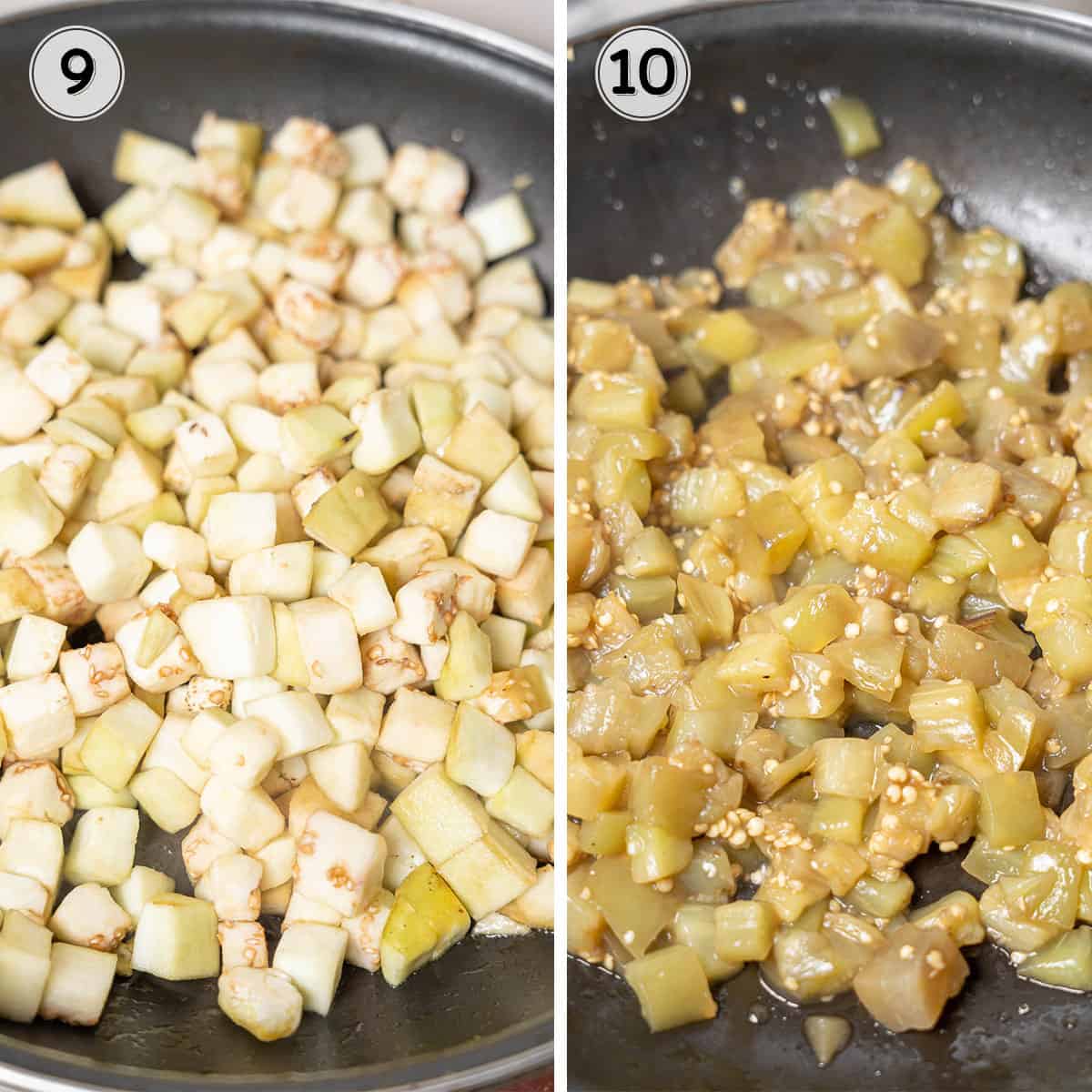
- In the second skillet, cook the eggplant the same way you cooked the zucchini. Brown the eggplant over medium-high heat.
- Turn the heat down and cook until it's softened, then add the cooked eggplant and zucchini to the bowl of onion and peppers.
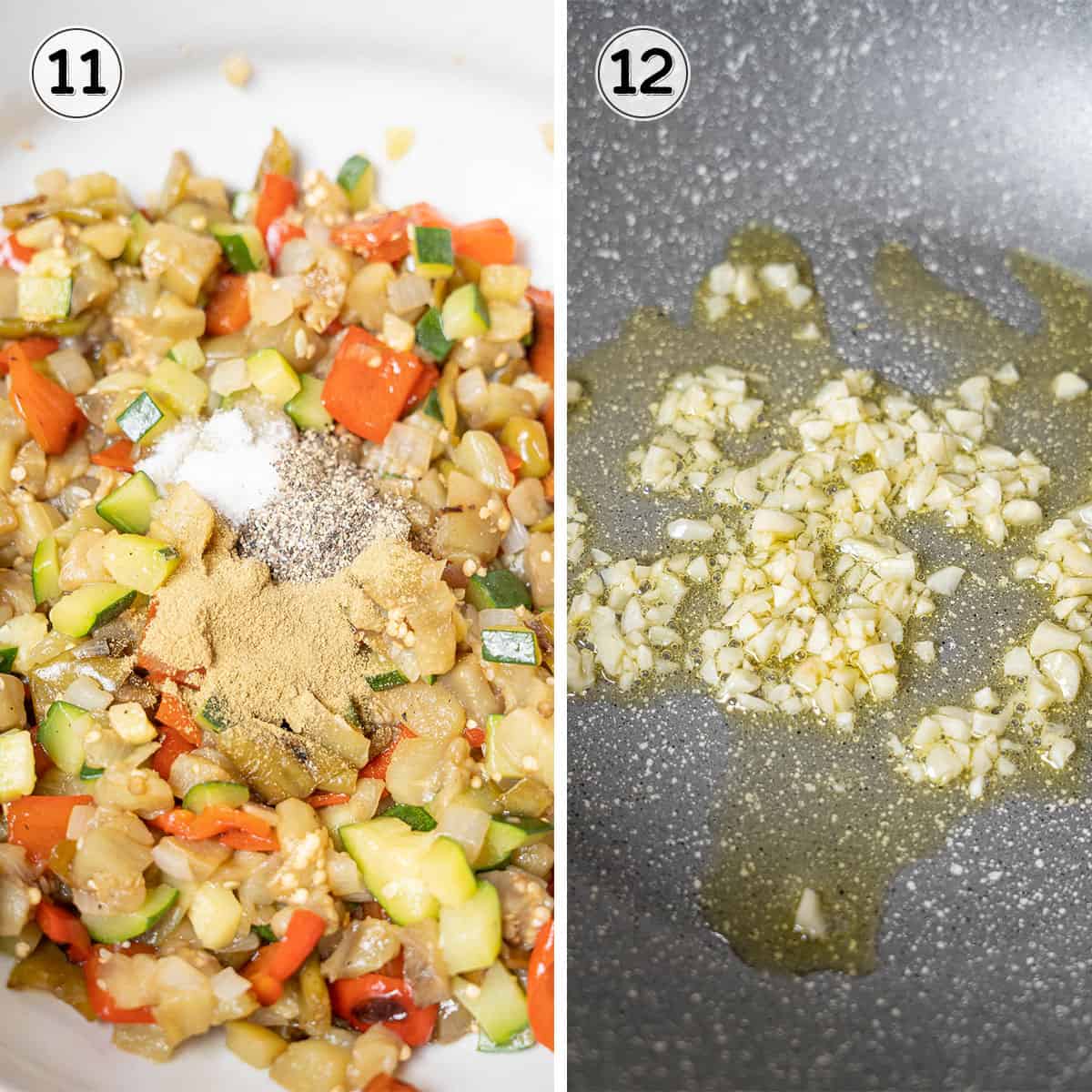
- Add the spices to the bowl of cooked vegetables and mix well.
- Heat a little olive oil in one of the pans and cook the garlic (and dried cayenne peppers if you're using them).

- Add the diced tomato.
- Cook over medium low heat until the veggies break down into a sauce, about 20 minutes. Season with sugar and salt.
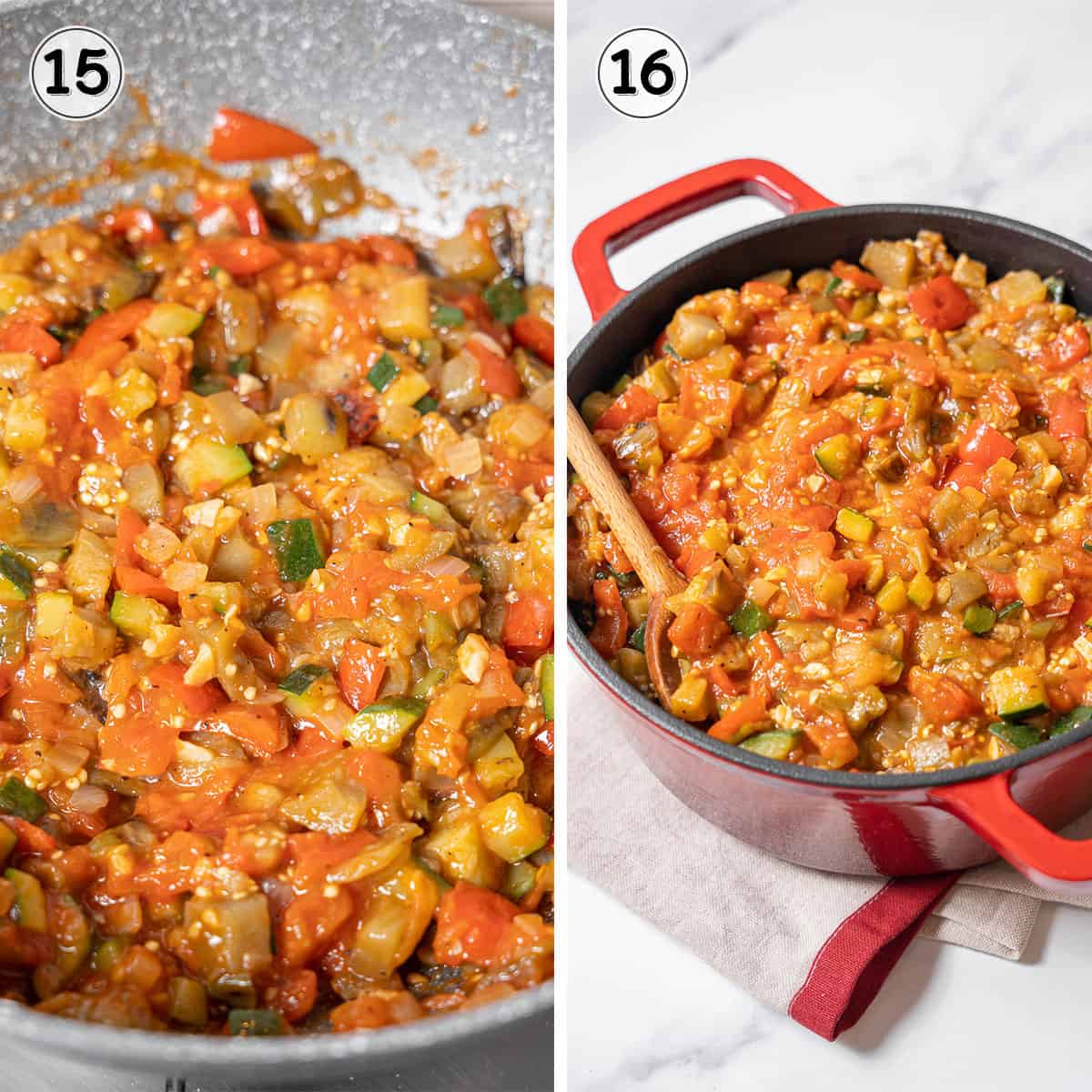
- Mix the cooked veggies and spices into the tomato sauce. Heat the mixture through and cook for about 10 minutes over medium heat.
- Serve with sliced Manchego cheese (pisto Manchego), or top with a fried egg (pisto con huevo).
Recipe FAQs
Pisto is a vegetable stew from the Murcia region of Spain. It is made with a variety of vegetables, such as eggplant, zucchini, tomatoes, onion, and pepper, and is very similar to the French ratatouille. It's often served topped with a fried egg or Manchego cheese.
These two dishes are very similar, but do have some differences. The vegetables in pisto are usually cut in 1 centimeter cubes, which is smaller than the veggies in ratatouille. Ratatouille is served plain, while pisto is also often served with a fried egg on top (pisto con huevo) or with Manchego (pisto manchego).
Pisto manchego is an authentic and delicious way to serve pisto. Simply top a serving of pisto with thin slices of Manchego or any aged sheep's milk cheese.
Serve
The most famous ways to serve pisto is topped with a fried egg (pisto con huevo) or topped with thin slices of Manchego (pisto manchego).
You can serve pisto as a main course, or as an appetizer. It also makes a great side dish with meat or fish!
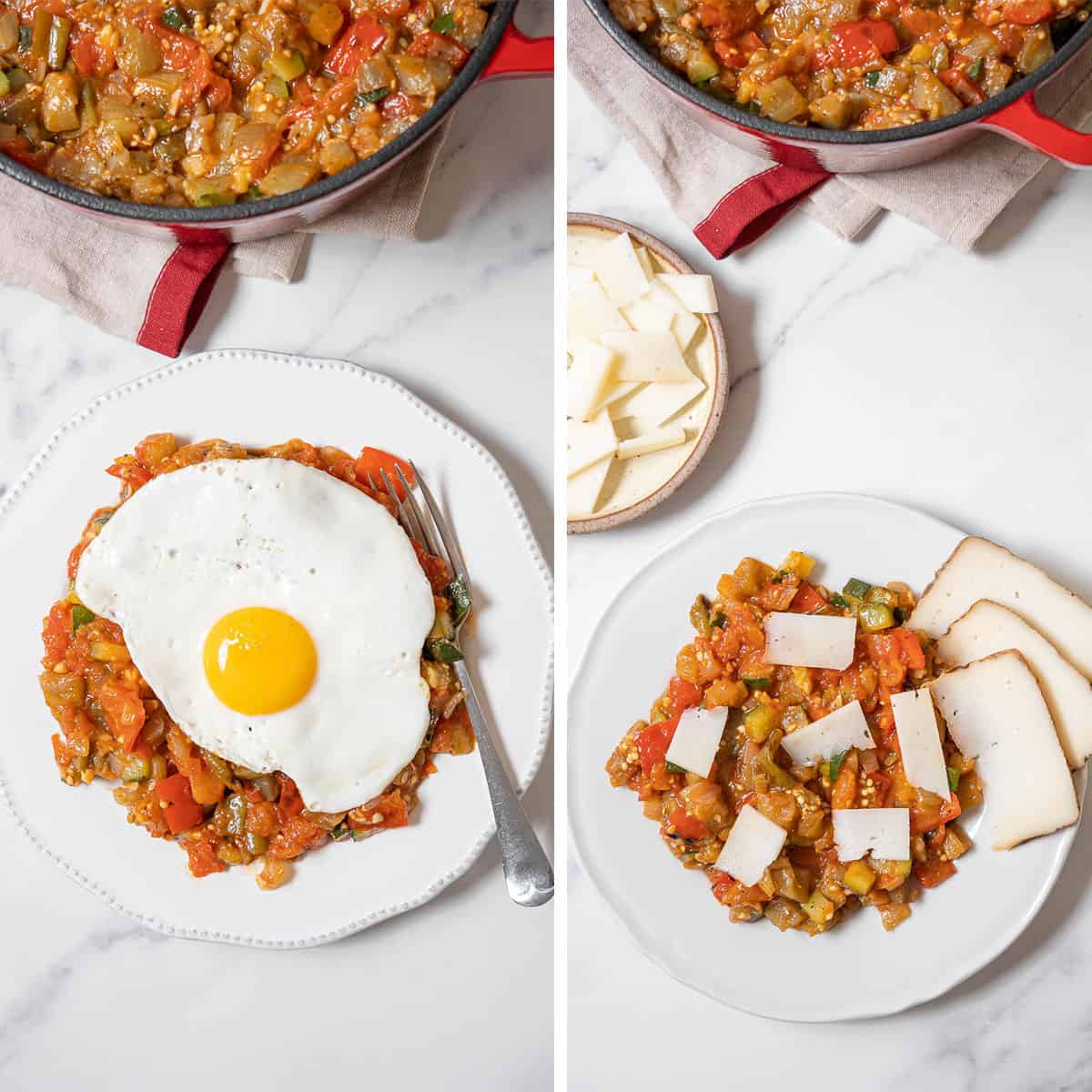
Store
Leftovers: Like all tomato-based soups and stews, pisto tastes better the next day. It will keep in the refrigerator for up to 5 days.
Freezing: Pisto can be frozen in an airtight container or zip-top freezer bag for up to 3 months. Let it defrost overnight in the fridge before reheating.
Expert Tips
- Choose good quality ingredients for the best flavors. It's especially important to choose flavorful tomatoes and olive oil.
- Be careful not to overcook the veggies, or the pisto will be mushy and not have an appetizing texture.
- Taste the pisto before serving and adjust the seasonings to taste.
More Spanish Stews You'll Love
If you liked this recipe, please share it with others!
Follow Spanish Sabores on Facebook, Pinterest, and Instagram for more recipes and travel tips.
If you've made and enjoyed this recipe, please leave a 5-star review!
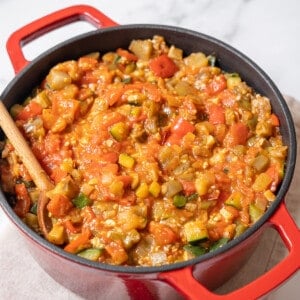
Traditional Spanish Pisto Recipe
Ingredients
- 3 small zucchini finely diced
- 2 medium red bell peppers finely diced
- 2 medium green bell peppers finely diced
- 4 medium onions finely diced
- 3 small purple eggplants peeled and finely diced
- 2 pounds ripe tomatoes peeled and finely diced
- 5 cloves garlic minced
- 1 small sprig fresh thyme
- 1 small sprig fresh rosemary
- 1 small sprig fresh oregano optional
- 1 teaspoon ground cumin
- 1 teaspoon granulated white sugar or honey or brown sugar
- salt and pepper to taste
- 2-3 dried cayenne peppers optional (and not traditional)
- extra virgin olive oil for sautéing
For Serving (Optional)
- fried eggs for pisto con huevo
- thinly sliced Manchego cheese for pisto manchego
Instructions
- Spread the diced eggplant on paper towels and sprinkle liberally with kosher salt. Let it sit for at least 10 minutes, then rinse thoroughly and drain well.
- Pour a splash of olive oil to two frying pans and set over medium heat for 2 minutes.
- Add the onions to one of the pans along with a pinch of salt. Sauté over medium-low heat until they are transparent, then cover and allow them to steam without browning. Be sure to stir occasionally. Once they're cooked, reserve them in a large bowl.
- Meanwhile, add the peppers to the other pan and sauté over medium high heat until browned. Lower the heat to medium, then cover and cook for about 10 minutes, stirring occasionally. Reserve along with the onions.
- Cook the zucchini and drained eggplant in the two skillets with a splash of olive oil. Start cooking them on medium high, then turn the heat to medium-low once they begin to brown. Cover and cook until tender, stirring occasionally. Reserve along with the other cooked vegetables.
- Add all the spices to the bowl of cooked vegetables and mix well.
- Add a bit more oil to one of the pans if necessary, and add the diced garlic (and the dried cayenne peppers if using). Sauté over medium heat until it smells aromatic, about 1 minute.
- Add the peeled and diced tomato to the pan. Cook over medium low heat for about 20 minutes, stirring frequently, until you have tomato sauce. Add the sugar and salt to taste.
- In a large frying pan, mix the reserved veggie and spice mixture with the tomato sauce and cook over medium heat until hot, about 10 minutes. Taste and adjust seasonings as desired.
- Serve the pisto as an appetizer or side dish with meat or fish. If you'd like to serve it as a main course, top it with a fried egg (pisto con huevo) or with thinly sliced Manchego cheese (pisto manchego). Enjoy!
Notes
- Choose good quality ingredients for the best flavors. It's especially important to choose flavorful tomatoes and olive oil.
- Cut the veggies in 1 centimeter cubes for a more authentic look.
- Be careful not to overcook the veggies, or the pisto will be mushy and not have an appetizing texture.
- Taste the pisto before serving and adjust the seasonings to taste.
Nutrition
Photography by Giulia Verdinelli


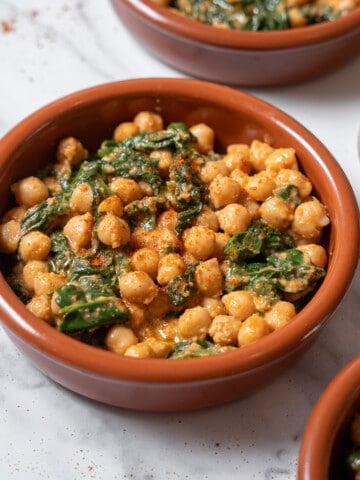
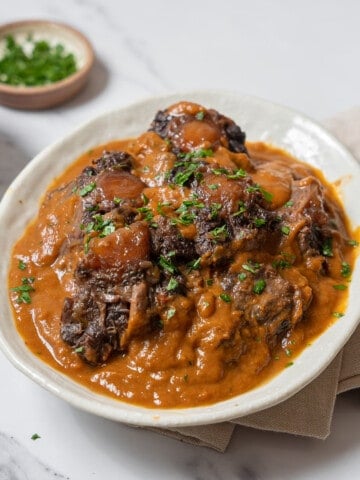
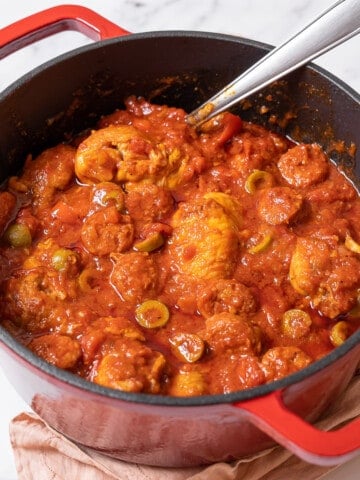
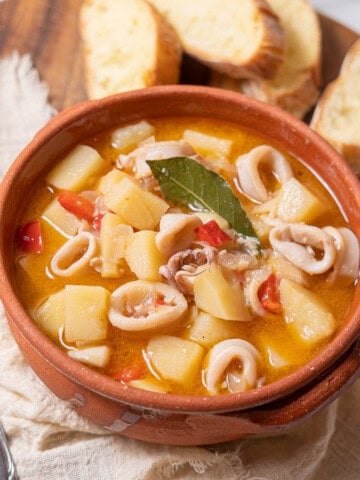


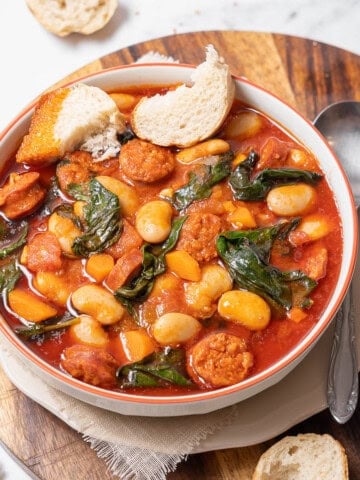
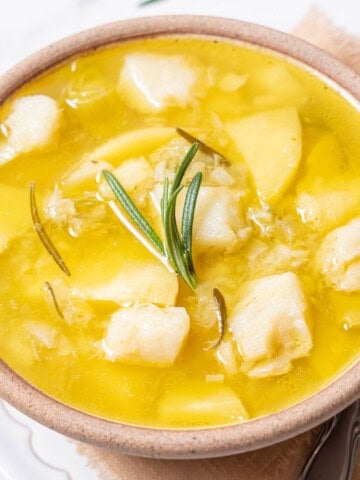
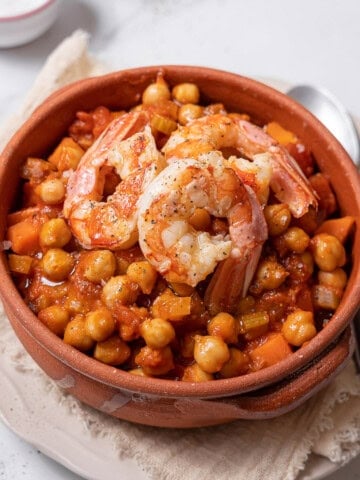
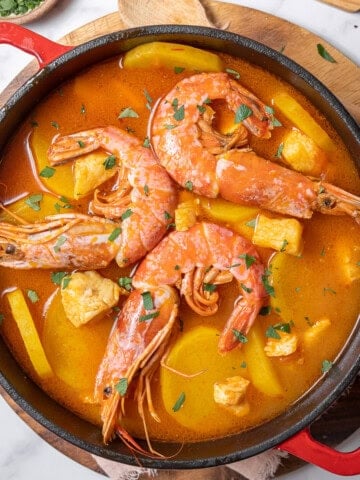
Ksenija
Dear Lauren, have you ever tried adding ñora paste to this recipe? And thanks for another great dish, you helped me to get really comfortable with Spanish cuisine
Amy Lee
Fudged around the ingredient quantities but still came out good! The trick is to be sure the veggies are all soft and fully cooked before removing and transferring to the separate bowl.
Mollie King
We ate this when we were kids, but called it splodge until I started taking French and learnt that it was actually called ratatouille. My mum served it with pork chops.
I still make it today, only now living in Spain I add the aubergine, I always make a big batch, freeze it and we have it for supper put under the grill with grated cheese.
Lise
Hi! My son-in-law introduced me to your website when we spent a month in Andalusia over the holidays. I’m cooking this Pisto recipe for the third time because I can’t get enough of it! The only change I made the last time I made it was do add a teeny bit of sherry. The recipe is perfect the way that it is nonetheless. Thank you!
Leilani
I have made this recipe so many times I have it memorized. Even my Spanish friends say it is the best Pisto they have ever had.
breach
Hi Lauren! Big fan! This dish is amazing me and the wife made it for our 3 kids, they loved it!
Judy
I grew up with something similar to this: pepper, onion , tomato and (variables) chicken, potato. We called it “free-tah”. It was years before i snapped to the similarity to ratatouille. Could never find recipes by the name i know it as. Thank you. Just had my egg version with an egg on top.
Michelle
My husband is from Spain, and I have used this recipe to guide me in making pisto. The main thing I change is that I do not cook the ingredients separately. I do it the traditional Spanish way and cook them in one large deep sauté pan. I add the ingredients that take the longest time to cook first, and add the remaining ingredients a few at a time that need less time. The flavors really blend together well this way. I start with the peppers and onions, a little later add the zucchini and summer squash, later, the eggplant and tomatoes. After it’s almost finished cooking, I also add two envelopes of Goya Sazon with Azafran along with the other seasonings. I purchased it at my local supermarket. I then usually serve the pisto over a bed of seasoned rice (yellow rice or white rice also seasoned with the Sazon)
Lauren Aloise
Mmm that sounds great!
Shelly L
Hi, do you know if this is really a 4 serving size dish if used as a side?
Robbie Horn
I became interested in Spanish cuisine since my daughter is doing a semester abroad and raves about the food. Pisto is a particular favorite of hers, so I searched and found this rendition. This is absolutely delicious and now something we make at least once a week. Healthy, delicious, and a wonderful main or side dish. I love it with a poached egg on top; my husband smothers grilled chicken with it. Great recipe and look forward to trying more from your website!
Tamia Brown
Esta receta fue genio. El huevo era una gran adición a esta comida . A pesar de que soy un gran fan de la carne , los calabacines, pimientos , berenjenas y tomates , fue muy satisfactorio . Gracias de nuevo por este plato saludable.
Mike
We recently made this and what can i tell you, we loved it. great recipe, we will be back to try some more.
Lola Pérez
Nice recipe! In Spanish Products we love Pisto !!
Hannah
I recently made this, and it turned out really well. The ingredients were easy to find in my local grocery store which was a huge plus. I really enjoyed this website.
Lauren Aloise
Thanks so much Hannah!
christopher
I live in asturias do, you have recipes for this area?
kind regards C C Ascott
Lauren Aloise
Slowly adding them in Christopher! I love Asturian food 🙂
Pat
I am definitely going to try this recipe. Sounds wonderful. Could I serve this with lobster?
Lauren Aloise
I don't see why not! Enjoy 🙂